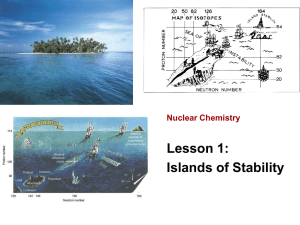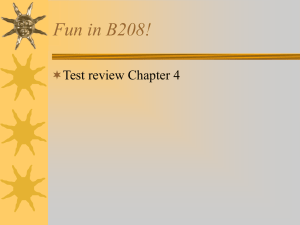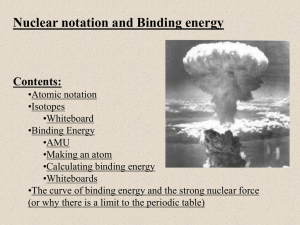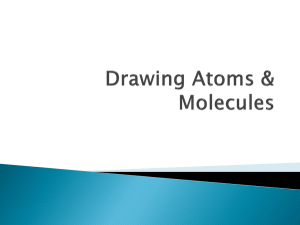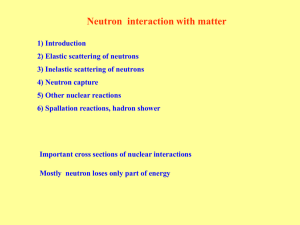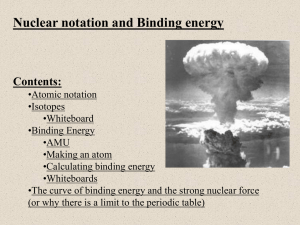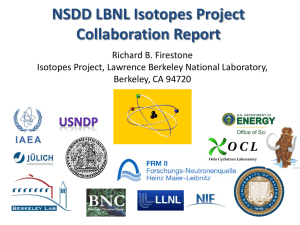Piezo-electric rocks and other induced nuclear reactions
advertisement
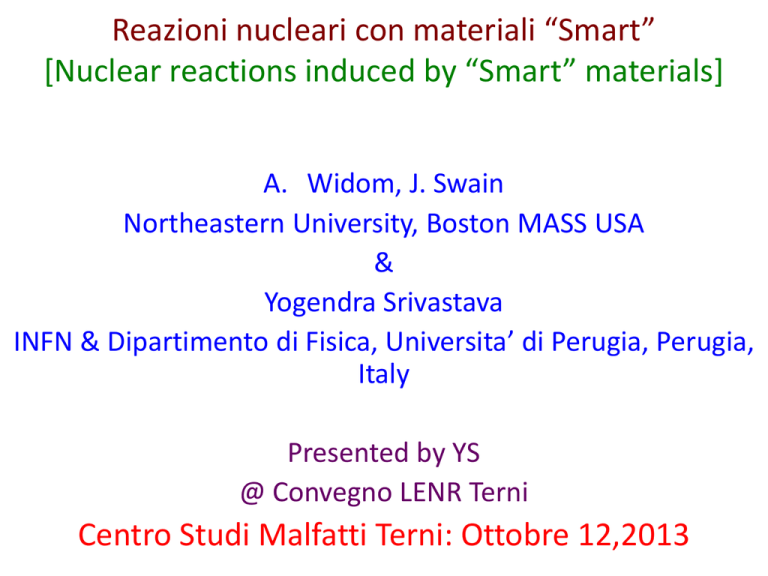
Reazioni nucleari con materiali “Smart” [Nuclear reactions induced by “Smart” materials] A. Widom, J. Swain Northeastern University, Boston MASS USA & Yogendra Srivastava INFN & Dipartimento di Fisica, Universita’ di Perugia, Perugia, Italy Presented by YS @ Convegno LENR Terni Centro Studi Malfatti Terni: Ottobre 12,2013 Il Piano dell’ seminario: Plan of the talk • Un breve reassunto di teoria per innescare reazioni nucleari a bassa energia: [Brief review of Low Energy Nuclear Theory [LENT]] • Applicazioni a tre materiali “Smart”: piro e piezo-elettrici, piezo-magnetici [Application to Pyro-electrics, Piezo-electric and Piezo-magnetic rocks -examples of three “smart” materials] • Altri metodi per innescare trasmutazioni nucleari [Other methods of inducing low energy nuclear transmutations] • Novita recenti WSS Giugno 2013: Usando tutte le tre forze dell Modello Standard di particelle nasce il processo Electro-strong con tasso di produzione alta [Exciting new developments: Widom-Swain-YS June 2013: Electro-strong LENT – high ratesnot suppressed by Fermi coupling constantit uses all three forces of the Standard Model of Particle Physics] • Il Progetto Preparata @ Perugia: [The Preparata Project: An experimental program at Perugia] The Early Theoretical Explorers [I primi esploratori teorici] Julian Schwinger Giuliano Preparata Important Issues Between Schwinger and Preparata, they looked at essentially all aspects of the experimental phenomena and provided possible theoretical reasons -much more than that by their critics• • • • • • • • • • Coulomb Barrier Intermittency Coherence and Collectivity Neutron Haloes Resonant Tunneling Lattice Missing neutrons and 4Helium Other channels: Branching ratios Loading Burst; Shut-down; Cracking The Missing Links [L’Anello Mancante]: What was missing in the analyses of Schwinger and Preparata? Two important elements that would be discovered only through experiments after their demise: • A: The Japanese CF results showed that all the action is from a few atomic layers near the surface. They are not volume effects. • [Superficie non volume] • B: Neither included the weak interactions. Widom would introduce that. [Interazione debole di Fermi] Electro-Weak Induced LENT: WLS Theory I Widom added the Weak Force for LENT following the Fermi dictum: Give me enough neutrons And I shall give you the Entire Periodic Table Electro-Weak Induced LENT: WLS Theory II Electrons and protons in condensed matter have low kinetic energy and the inverse beta decay [electron capture by Wick] has a Q-value deficit of about 0.78 MeV. This means an energy W≥ 0.78 MeV needs to be put into the system for the reaction to proceed. W can be (i) Electrical Energy: Widom-Larsen (ii) Magnetic Energy: Widom-Larsen-Srivastava (iii) Elastic[Piezoelectric & Piezo-magnetic] Energy: Widom-Swain-Srivastava We have examples in Nature for all three Threshold Energy Input for EW LENT Lack of this energy in usual condensed matter systems is why we have electromagnetic devices and not electroweak devices. Special methods are hence necessary to produce neutrons. Rate of Neutron Production • Once the threshold is reached, the differential rate for weak neutron production is A robust production rate for neutrons Rome group claims: neutrons unlikely Experimentally Untrue! Experimental Evidence of Neutron Production in a Plasma Discharge Electrolytic Cell Domenico Cerillo, Roberto Germano, V. Tontodonato, A. Widom, YS, E. Del Giudice, G. Vitiello Key Engineering Materials, 495 (2012) 104 Plasma Cell XV: Neutron Flux The Promete Naples Experiment XIV: Evidence for Nuclear Transmutation Cathode: Pure Tungsten in K2CO3 Substances found afterwards on the surface: 1. Rhenium [always] With less abundance 2. Osmium 3. Tulium 4. Yttrium 5. Gold 6. Hafnium 7. Strontium 8. Calcium 9. Tin 10. Germanium 11. Zirconium Electric Field Acceleration • Excitation of surface plasma modes at a mean frequency Ω, yields a fluctuating electric field E. These QED fluctuations renormalize the electron energy Electric Field Mode II • Electric Mode [W-L] Surface Plasmon Polariton [SPP] evanescent resonance modes can be set up on a metallic hydride surface generating strong local electric fields to accelerate the electrons The relevant scale of the electric field and the plasma frequency needed to accelerate the electrons to trigger neutron production is given by Hence when requisite electric field and the frequencies are reached, very low momentum [called Ultra Cold] neutrons can be produced. 4 Acid tests for LENT For truly conclusive evidence that LENT has indeed occurred in a given experiment, we must have: 1. EM radiation [gamma’s in the (100 KeV-MeV) range] 2. Neutrons must be observed 3. Observance of materials not initially present [i.e., direct confirmation of nuclear transmutations] 4. More output energy than the input energy LENT in Nature: Neutrons from Lightning Mean Current about 35 Kilo Amperes (I/Io) ~ 2 Strong Flux of Low Energy Neutrons Produced by Thunderstorms A. Gurevich et al: Phys. Rev. Lett. 108, 125001; 23 March(2012). Strong flux of neutrons from thunderstorms II Salient results and conclusions derived by the experimentalists: • Most of the observed neutrons are of low energy in contrast to cosmic ray measurements where higher energy neutrons dominate. • Measured rates of neutrons are anomalously high and to accommodate them an extra ordinarily large intensity of radiation in the energy range (10–30) MeV, of the order of (10–30 ) quanta/ cm2 /sec. is needed to obtain the observed neutron flux. • The obtained g- ray emission flux was about 0.04 quanta/ cm2 /sec., 3 orders of magnitude less than the needed value. • In all these observations the radiation intensity was observed at moderate energies (50–200) KeV [3 orders of magnitude lower than that needed] Strong flux of neutrons from thunderstorms III [Widom-Swain-YS] We show that the source of a strong neutron flux at low energy is not theoretically anomalous. The explanation, employing the standard electroweak model, as due to the neutron producing reaction which is energetically allowed via the large high current electron energy renormalization inside the core of a lightning bolt. Strong flux of neutrons from thunderstorms IV • Consider an initially large number (N +1) of interacting electrons contributing to the electric current within the lightning bolt undergoing a weak process • The importance of having a large number of “spectator” electrons is the induction of a coherent Darwin interaction between the electrons. • Although only one electron disappears, many electrons are required to yield a high collective contribution to the reaction energy which thereby enhances the nuclear activity. We have shown that the enhanced reaction activity produces the strong flux of neutrons in thunderstorm lightning. Large values of the parameter Gamma Rome group claims that maximum: Experimentally untrue: With laser wakefields 1. Imperial College (2004) 2. Berkeley (2004): 3. LOA, France (2004): 4. Berkeley (2006) DREAM BEAMS by FAST LASERS I DREAM BEAM DREAM BEAM II Two Smart Materials 1. Pyroelectric crystals: when heated or cooled produce electric fields 2. Piezoelectric crystals when crushed produce electric fields Piezoelectric Solids Strains in a crystal produce voltages across the crystal and vice versa. Magnetite: piezomagnetic material Magnetic counterpart of a piezo-electric material energy & vice versa Elastic energy is converted into Magnetic energy Neutron production from fracturing “Smart” rocks [WSS]: I • Theoretical explanation is provided for the experimental fact that fracturing piezoelectric rocks produce neutrons • The mechanical energy is converted by the piezoelectric effect into electrical energy In a piezoelectric material [quartz, bone, hair, etc.], forming a class called “smart materials”, conversion of elastic energy electrical energy can occur Neutron production from fracturing rocks [WSS]: II Electric field Strain tensor Piezoelectric constant Neutron production from fracturing rocks [WSS]: III • Dijkl is the phonon propagator • εij is the dielectric response tensor; it appears in the polarization part of the photon propagator • The Feynman diagram shows how the photon propagator is affected by βijk • The above makes us understand why mechanical acoustic frequencies occur in the electrical response of piezoelectric materials Neutron production from fracturing rocks [WSS]: IV Numerical Estimates: (i) vs velocity of sound vs. c is ~ 10-5 hence (ωphonon /ωphoton) ~ 10-5 for similar sized cavities (ii) The mean electric field E ~ 105 Gauss (iii) The frequency of a sound wave is in the microwave range Ω ~ 3 x 1010/sec. (iv) The mean electron energy on the surface of a micro-crack under stress σF is about W ~ 15 MeV (v) The production rate of neutrons for the above is LENT in Smart Materials I: Pyroelectrics A pyroelectric crystal develops an electric field due to (adiabatic) changes in its temperature and its opposite: an applied electric field causing an adiabatic heating or cooling of the system is called the electrocaloric effect. Examples of natural pyroelectric crystal are: tourmaline, bone, tendon. It was experimentally shown that pyroelectric crystals when heated or cooled produced nuclear dd fusion evidenced by the signal of 2.5 MeV neutrons. The system was used to ionize the gas and accelerate the ions up to 200 KeV sufficient to cause dd fusion. The measured yields agree with the calculated yields. Pyroelectrics II • In a single domain of a pyro-electric crystal, the mean electric induction is not zero: • When such a crystal is heated or cooled, it gets spontaneously polarized: produces an electric field • The effective electric field (Eeff) generated in the crystal is assumed proportional to the change in the temperature (DT): Eeff = f DT • Lithium Tantalate [LiTa03] has a large f = 17 KV/cm K Pyroelectrics III • The energy given to an ion of charge e may be written as eV = 4pet f(DT)/e [t is the thickness; e is the dielectric constant] • For a two Lithium tantalate crystal set up, each 1 cm thick, e = 46, DT = 100 C, the energy should be E = (2 e) Voltage = 933 KeV • Instead the measured value is 200 KeV [In the core of the Sun it is only about 1.5 KeV] • This energy is much more than sufficient for say two accelerated deuterons to overcome the Coulomb repulsion and cause fusion. • Pyro fusion has been observed in several laboratories around the world. Pyroelectrics IV Electro-strong LENT I Electro-strong Nuclear Disintegration in Matter J. Swain, A. Widom and Y. Srivastava arXiv: 1306.5165 [nuc-th] 19 June 2013 arXiv: 1306.6286 [phys-gen ph] 25 June 2013 Real photons and virtual photons [from electron scattering] have been used for over 50 years to disintegrate nuclei through giant dipole resonances. In the past, accelerators have produced the needed [1050] MeV photons for breaking up nuclei. Our suggestion: accelerate electrons up to several tens of MeV through lasers and “smart” materials to cause electro-disintegration Electro-strong LENT II Processes usually studied are 1 & 2 neutron production A* & A** are excited nuclei. We have a synthesis of electromagnetic and strong forces in condensed matter via giant dipole resonances [GDR] to give an effective “electro-strong interaction” - a large coupling of electromagnetic and strong interactions in the tens of MeV range. GDR Energy of light nuclei ~ (15-25)MeV; GDR Energy of heavy nuclei ~ (10-20)MeV Electro-strong LENT III • GDR are well-studied and represent a strong coupling between all atomic nuclei and photons in the range of (10-25) MeV. • GDR are well-known to be excited by electrons with a few tens of MeV with significant neutron yields (often 10−3 or more) per electron on thick targets, and both fast and slow neutrons can be produced. • GDR are very well understood and used, both theoretically and practically in devices well outside the scope of nuclear physics proper [for example in medical physics]. Electro-strong LENT IV • When electrons are accelerated to tens of MeV in condensed matter systems, then in addition to producing neutrons via electroweak processes, we expect, and at much higher rates, what we call “electrostrong processes”, where nuclear reactions take place mediated by GDR. • In this case one expects slow neutrons from evaporation of GDR’s as well as some fast ones, and additional nuclear reactions when those neutrons are absorbed. Electro-strong LENT V Once electrons are accelerated to tens of MeV in condensed matter systems, then we expect both endothermic and exothermic nuclear fission & appearance of new nuclei due to further reactions of the decay products including subsequent decays and/or the absorption of produced neutrons. Electro-strong LENT VI • AN EXAMPLE: ALUMINUM AND SILICON FROM IRON If electrons are accelerated to several tens of MeV in condensed matter systems containing iron, then one may expect the appearance of aluminum and silicon. Experimental data: A. Carpinteri et al. [Politecnico Torino] Electro-strong LENT VII AN APPROXIMATE UNIFICATION OF FORCES AT (1020) MEV IN CONDENSED MATTER At tens of MeV, all three forces of the Standard Model of Particle Physics: electromagnetic, weak, and strong processes can all be expected to occur in bulk condensed matter. The Preparata Project at Perugia At University of Perugia, we have assembled a group of experimentalists who have begun a set of Proof of Concept experiments to implement and check the theoretical results obtained by our group. Presently we have a 3-year doctoral candidate [EM] and a Laurea Specialistica student and we are expecting to add a Postdoctoral researcher depending upon the availability of funds. Technical and research support is being provided by ENEL, who are our Collaborators. Giuliano Preparata (1942-2000) The Preparata Project at Perugia II As stated before, for the completion of the project our goal would be to make all 4 Acid tests for LENT 1. Evidence of some high energy [KeV-to-MeV] photons. 2. Evidence of some produced neutrons 3. Evidence of some nuclear transmutations [new elements found after which were absent before] 4. Some gain in energy The Preparata Project at Perugia III Brief Description of the Proof of Concept phase A: Electron Excitation via Surface Plasmons: AI: Selection and composition of materials A2: Induction of Surface Plasmon Polaritons A3: Detailed study of the resonance phenomena B: Induction of nuclear reactions B1: Study of rates vs. materials B2: Spatial distribution of reaction regions [hot spots] C: Detection of products of nuclear reactions C1: Choice of detection techniques C2: Study of final products C3: Analysis of results Synthesis of Electroweak & Electrostrong, fulfills the Fermi dictum to reproduce the entire periodic table given enough neutrons. We dedicate it to the memory of the two J/Gulians: Julian Schwinger and Giuliano Preparata who worked so hard and suffered so much Summary and Future Prospects Since, over a decade ago, when the pioneers in Italy GP, Emilio Del Giudice, De Ninno and their group were doing experiments, some theoretical and technical advances have occurred. But more than that, the paradigm about low energy nuclear reactions has been shifting, albeit slowly. Hence, our optimism. Time will tell. Thank you Which is more likely? Electro-Weak-Strong LENT or this? Spare Slides A Sad Petition against Piezo nuclear processes According to news reports, 1300 ricercatori Italiani have signed and sent a petition to the Italian Minister against nuclear reactions from piezoelectric materials and low energy nuclear reactions in general. There have been devastating articles in all major Italian newspapers: Corriere della Sera, La Stampa, La Repubblica, Il Manifesto,… It saddens me that a majority of physicists who have signed, do not know much about piezo-electric effect even after signing. They obviously do not know that Russian groups have reported [during the period 1953-1987] high energy particle production from fracturing certain crystals. They do not know that there is supporting Japanese work published in 1992 and that there is a serious discussion about this subject in a book published by the Cambridge University Press in 1993. They do not know that fracture induced nuclear transmutations and neutron production have been reported by Russian groups in three papers [published in Nature, JETP and Physica], by an Indian group [published in Phys Lett A] and two papers by a Japanese group [published in Nuovo Cimento and Jap. J of App Phys]. We have ourselves published three papers in reputable journals on this subject. As the Nobelist Julian Schwinger, might have said, have they forgotten that physics is an experimental science? Let us turn to piezo electric theory. How many of the signers know that there is a well studied Hamiltonian which describes how elastic energy is directly converted to electrical energy and vice versa? How many have bothered to learn about Griffith’s law about microcracks? It teaches us that stresses needed to create a micro crack can be about a thousand times smaller than the stress needed to break all chemical bonds? How many know that Carrara marble is not piezoelectric but quartz is? Quartz marbles when crushed would produce large electromagnetic radiation thanks to a direct transformation of piezoelectric elastic energy into electromagnetic energy. How many theorists amongst the signers have bothered to draw and compute a one-loop Feynman diagram and check that the photon propagator inherits the acoustic frequencies in the microwave range? How many have bothered to estimate the size of the electric fields generated through a microcrack in a piezoelectric crystal? And thence estimate how large an acceleration is imparted to an electron. How many have bothered to estimate the chemical potential [which an electron sees] in order to find that it can easily be in several tens of MeV’s when a piezoelectric rock is crushed and hence more than capable of producing neutrons? Alas, had they done so they would have shed their negative attitude and realized that a recent proposal to employ piezoelectric sensors for advanced warning against earthquakes has a lot of merit and certainly worthy of investigation by researchers for the general good of Italy. Failure to do so would lead us to buy such devices in the near future from Japan most probably. It is a reasonable fear that this petition would very soon lead to articles in Nature and Science [science equivalent of Moody’s or Standard & Poor for the financial world] trashing Italian physics, once a jewel of Italian and international science. "Elegant Soutions. Ten Beautiful Experiments in Chemistry" by Philip Ball Rutherford had teamed up with British chemist Frederick Soddy to find that thorium produced argon: They realized the implication with something akin to horror. `The element was slowly and spontaneously transforming itself into argon gas!', Soddy later wrote. At the time, he was shocked. Soddy reportedly stammered to his colleague in the lab, `this is transmutation: the thorium is disintegrating. `For Mike's sake Soddy', Rutherford thundered back, `don't call it transmutation. They'll have our heads off as alchemists.' But transmutation was truly what it was.



